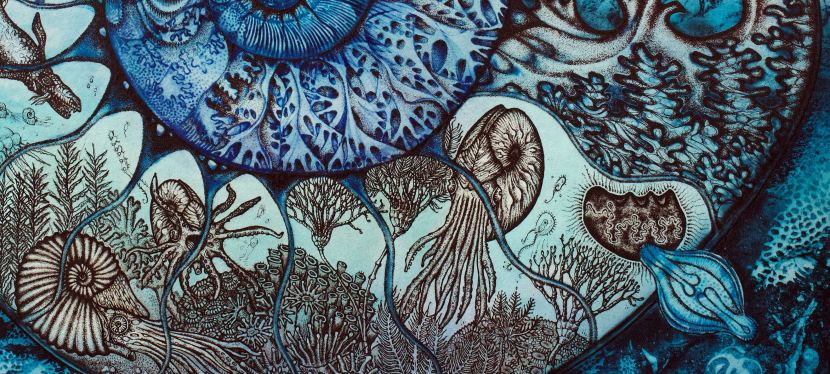The Archaeological Survey of Alberta is proud to release Occasional Paper Series No. 37 dedicated to historic resources encountered and documented during investigation programs following the June, 2013 flood in southern Alberta. The volume contains 18 articles written by historic resources consultants, university researchers, staff of the Royal Alberta Museum, and members of the Archaeological Survey of Alberta. The flood eroded and blanketed archaeological, palaeoenvironmental, and palaeontological sites; Alberta Culture and Tourism coordinated a series of contracts in 2014, Read more
Month: January 2018
The Early Years of Archaeology in Alberta
As the summer of 1949 approached, Boyd Wettlaufer, a Master’s student of archaeology at the University of New Mexico, was asked by his Field Director where he wanted to dig for the summer. In a 2008 interview, with Karen Giering of the Royal Alberta Museum, Wettlaufer related how the conversation with his director had transpired:
“Boyd,” he said. ‘I think it’s time you did a dig of your own. Where would you like to go?” And I thought of Head-Smashed-In. I said, “Well there’s a buffalo jump up in Alberta I wouldn’t mind taking a look at.” And so, he gave me a couple boxes of groceries and credit card for the gas and the two boys (William Hudgins and Donald Hartle) to help me and sent me off” [1].
Wettlaufer was familiar with the area around Fort MacLeod, having been stationed out of the nearby Royal Canadian Air force base of Pearce during the war as a flight instructor and aerial photographer. It was a member of the local historical society (Boyd and his wife Dorothy plugged their trailer into her porch for electricity [2]), who had first shown him the Read more
Exterior Rehabilitation and Restoration of Old St. Stephen’s College

After about three years, the Old St. Stephen’s College – Provincial Historic Resource has now completed the planning and implementation of its exterior rehabilitation and restoration project which started a number of years back with its cedar shingle roof replacement.
This recently completed scope involved foundation upgrades and stair revisions to the ground level access points of the building, including the addition of a compatible, distinguishable and subordinately designed barrier-free access ramp, as well as masonry repairs and the replacement of the 1980’s metal storms with more historically appropriate wooden units that will have the added benefit of allowing more natural ventilation in the building. Additional work also included the rehabilitation of the former fire exit door openings, the return of the round window at the top level of the building and the addition of vented caps to the non-functional chimneys. Read more
Rainbow Fossils and Bison Calling
For an animal that looks like an awkward collision of snail and squid (Figure 1), ammonites have played surprisingly important roles in international history. To Blackfoot First Nations on the Plains of North America, the ornate edges of ammonite segments resemble miniature bison (sometimes called buffalo), and, for over a thousand years, they have been used in ceremonies to summon bison spirits. Across the ocean, 16th to 19th Century fossil hunters propelled ammonites into palaeontological fame by using them to anchor theories of an ancient earth (Figure 2). In modern Alberta, Canada, miners and members of Blackfoot First Nations are seeking iridescent ammonites to fuel a global demand for art and jewellery; sacred and secular, and now economic, ammonites are immersed in a complex story. Read more
Happy New Year 2018
Happy New Year, everyone! We are excited for 2018 and look forward to sharing more of Alberta’s history with our readers.
This past year was a great one for RETROactive. We had our most annual views ever with a total of 72,442, coming from more than 140 different countries. The countries where most of our views came from include Canada, United States, United Kingdom, Germany, Australia, France, South Korea, Mexico, Netherlands, and India. We published 48 new posts in 2017 and our busiest day of the year was April 19th when The Tale of a Rusty Revolver was published (this was also our most viewed post of the year).
Did you know that we also have a Facebook page and Twitter account? You can find us on Facebook at “Alberta’s Historic Places” and on Twitter at @ABHistoricPlace, or follow the links below.
Facebook: https://www.facebook.com/Albertas-Historic-Places-180887998609781/
Twitter: https://twitter.com/ABHistoricPlace?lang=en
Lastly, our Popular Posts page has been updated. This lists our top 10 posts of all time and is a great way to introduce new readers to our blog – please share the link with your friends, family, and colleagues!
Thank you to all our readers for your support. Here’s to a great 2018! Next week we will have a new post from the Heritage Art Series!





